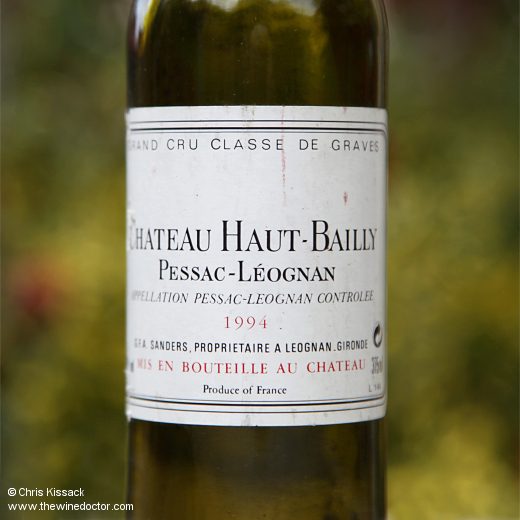Château Haut-Bailly 1994
“A half-bottle sends us to bed happy,” wrote Hugh Johnson, not that long ago.
It is a quote I see trotted out from time to time, not infrequently by those advocating for half-bottles as a route to moderation. This seems eminently sensible, and I am sure many reading this would agree with the sentiment. It overlooks, however, the fact Hugh was describing his evening drinking after polishing off his first (admittedly shared) bottle, moving on to a cheeky half-bottle as a vinous nightcap. Perhaps not the message the anti-alcohol lobby were initially thinking of.
Whether you are popping the cork on your first, second or third half-bottle of the evening, there is no doubt that this format has a valuable role to play in any cellar.
Half-bottles are often said to mature a little more quickly than standard bottles, and while I have never put this to the test myself with a comparative tasting of standard and half-bottles I have no reason to disbelieve it. I have seen – or rather tasted – the evidence that format size impacts the aging curve too many times for me to deny it. Many double magnums and jeroboams I have tasted from in Bordeaux have clearly aged along a more graceful curve than standard bottles. The benefits of drinking from larger formats is real; surely it only makes sense that standard bottles have a similar survival advantage over halves?
Of course, not everybody wants slowly maturing wine. If you are eager to pull the cork, a format that matures a little more quickly can be an advantage. Facilitating an earlier drinking window is a role in which half-bottles can really shine.
Having said that, I seem to have taken more than thirty years to get around to this one.

It might (or it might not!) surprise you that my own cellar is largely devoid of half bottles, although this comment ignores the trio of bins packed to the gills with half-bottles of sweet and fortified styles, almost exclusively Sauternes and single-vintages Ports. If you are wondering why the Loire Valley is not more represented, Ligérian sweet wines tend to be bottled in svelte 500 ml bottles, which are stacked (precariously) elsewhere.
Having said that, nestled among all those golden halves there are also one or two reds. Among them, a slowly dwindling stock of the 1994 vintage from Château Haut-Bailly. I purchased them many (at least twenty) years ago, and the memory of when, where and why I bought them is now lost to time. Perhaps they were just being offered at an irresistibly low price? Yes, I remember when top cru classé Bordeaux used to crop up at irresistible prices. Gosh, I really must be old.
Having dipped into my little stock now and again, pulling one out recently I realised it was the final bottle. Now more than thirty years old, the fact it has evolved so well over three decades rather belies the notion that half-bottles are early-maturing. How will it be drinking in another three decades compared to a bottle or magnum though? I think my money would be on the magnum. For now, though, let’s stick with the wine from this ultimate half.
In the glass the 1994 from Château Haut-Bailly, revisited more than three decades on from the vintage, recently released from its half bottle and left to breathe in a cool place for an hour or two, presents a reassuring colour. For its age it maintains a surprisingly dense and opaque core, surrounded by a matt and slightly dusty rim of modest density. This is followed by a quite classic if rather ethereal aromatic profile, with appealing scents of dried dark cherry, currant, juniper and mint, the delicate impact perhaps a reflection of the somewhat meagre nature of the vintage. There then comes a cool and tightly formed palate, grained with savoury, dry and slightly coarse tannins (still! – at thirty-one years!), all set in a precisely formed but gentle texture. It has charm, with a sense of classicism which seems in keeping with the Haut-Bailly house style, but it also carries the lighter nature of the vintage, and I feel it is fading compared to my last bottle (which, admittedly, was ten years ago). It concludes with a dry finish of lingering tannin, poking through the delicate substance. This certainly does not have another three decades in it, but it still has life, even in this small format; nevertheless, I would drink this one sooner rather than later. Especially if we want the half-bottle to send us to bed happy. The alcohol is 12.5% on the label. 91/100 (17/11/25)
Read more in:
- My detailed profile of Château Haut-Bailly
- Prior reports on the 1994 Bordeaux vintage
- A guide to Pessac-Léognan and Graves appellations
